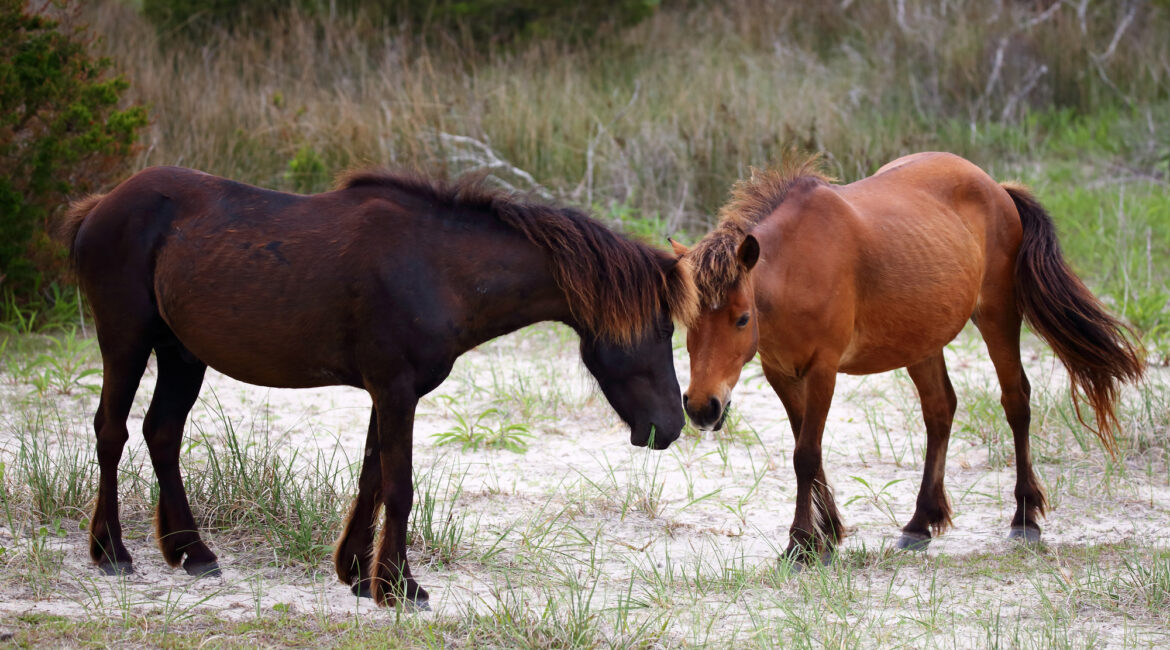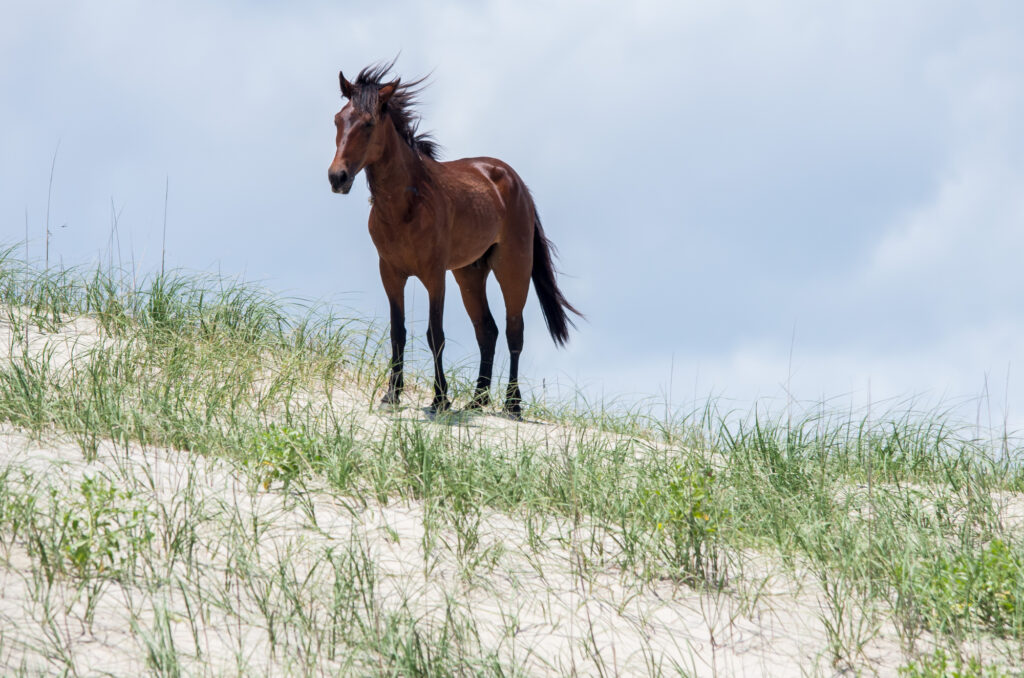
The Banker Horses of North Carolina
Nestled along the picturesque coast of North Carolina lies a hidden gem that has captivated the hearts of many: the Outer Banks Banker horses.These wild horses, also known as Banker ponies due to their smaller size, have a unique and fascinating place in the state’s natural and cultural heritage. With their rich history and remarkable survival against the odds, the Banker horses have become more than just a group of feral equines; they embody the spirit of resilience and connection to the wild that resonates with both locals and visitors alike.
A Glimpse Into The Past
Along the Outer Banks and towns running along the coastal mainland, history and traditions are interwoven with stories of wild horses that have lived on the barrier islands for centuries. The wild horses that call the Outer Banks home are described by elders as having always been here; they were here when we came; they swam ashore from sinking ships. The Outer Banks wild horses have been here for a very long time hence where their name, “Banker” comes from.
Historical research and genetic testing indicates that these wild horses descended from a core group of the old type Spanish horse. In historical journals of exploration and colonization sailing vessels from the 16th century, Lucas Vasquez de Allyon was one of the first explorers to land on the coast of North Carolina. Allyon sent one of his captains on an expedition to River John the Baptist, possibly what is today’s Cape Fear. There were also other explorers from Allyon’s expedition who landed nearby. In the ensuing conflict with the Coree Indians, Allyon and his men abandoned the area and left their horses behind.
Several decades later, Spanish explorers traveling with horses from their homeland traded their horses and other goods with English colonists on the Outer Banks.
As a result of strife with the Indians and a lack of food, the Outer Banks were eventually abandoned as a settlement. But the horses of Spanish origin remained. Adjusting to the climate and through natural selection and isolation they became a hardy and distinct breed.
In the mid-1800s, farmers who had settled near the Outer Banks regularly rounded up horses descended from the original Spanish stock. They used these horses as working animals on their farms, although not all survived the change in lifestyle.
Fast forward nearly 200 years and the descendants of these horses still remain on the beaches where they landed before America was a country. In the more remote areas of the Outer Banks, the horses are believed to be pure to their original Spanish roots.
In 1982, representatives of the Spanish Mustang Registry based in Wyoming visited the Outer Banks to see the last known remaining bands of wild Banker horses. On the remote Currituck County Outer Banks, they found horses that very much resembled their Spanish ancestors.

Breed Characteristics
Although they are wild horses, Bankers are known for their calm and even disposition. They are on the smaller size ranging between 13 – 14.3 hands high. These adaptable horses have learned to survive on little food, mainly consisting of marsh grasses. In order to reach the fresh groundwater, they will dig holes that may be as deep as four feet in order to reach the underground sources of fresh water.
Where to Find Banker Horses on the Outer Banks
When visiting the Outer Banks you can see the horses in different areas: the Corolla area, the Shackleford area, and the Beaufort area. In Ocracoke, another semi-feral group is kept in a 180-acre fenced-in area. Only the Corolla, Shackleford and Ocracoke are considered to have pure Spanish blood.
As the Corolla area developed and State Route 12 was extended into the area where the Corolla Banker horses lived, many were hit by cars. To protect the remaining horses, the Corolla Wild Horse Fund was formed in 1989. This group works to protect the horses from human interference through education and providing veterinary care and herd management.
Shackleford Banker horses occupy 7,544 acres on the Outer Banks that can only be reached by boat today. As a result of federal legislation passed in 1998, the Shackleford Banker horses, which are designated as wild Colonial Spanish Mustangs, are allowed to roam freely on 3,000 acres of Cape Lookout National Seashore. Approximately 120 to 130 people are targeted for this herd. To manage the number of horses, the government rounds them up periodically and places them up for adoption. To reduce the number of births, contraceptives are also used on mares.
The Banker horses of North Carolina are more than just animals; they embody the resilience of nature, the spirit of adaptation, and the importance of preserving our natural heritage.
0 Comments